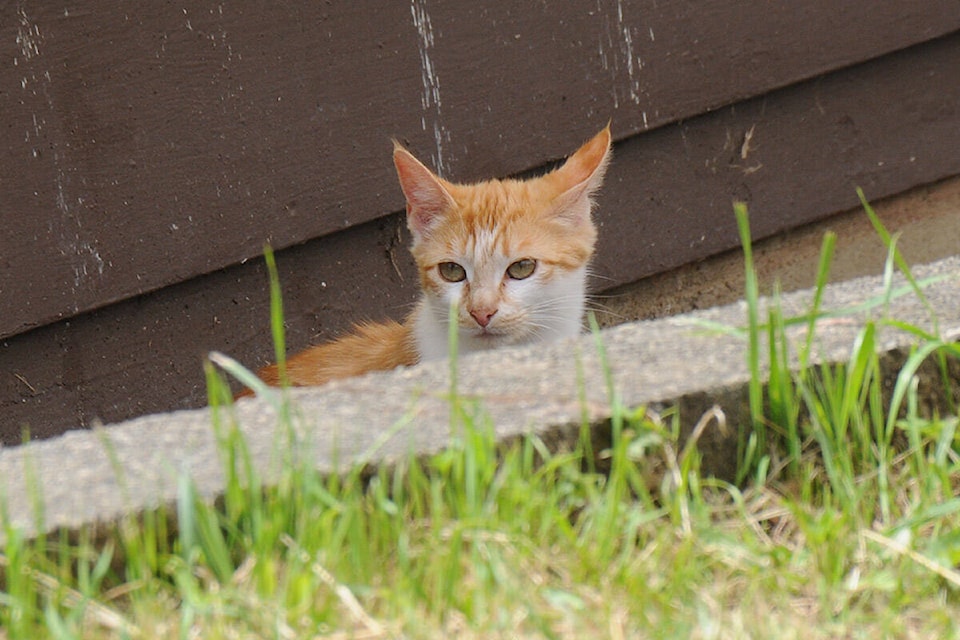It鈥檚 a hard knock life for feral cats in the Okanagan. Living in a climate that switches from extreme cold in the winter to extreme heat in the summer, searching for food and water, avoiding predators. Much like humans do in desperate situations, two or more homeless cats will often band together for mutual protection and support. Very often those two cats will be joined by more cats. If even a few members of a colony are unspayed/neutered, the colony鈥檚 numbers can skyrocket very, very quickly, bringing more and more cats into this hard existence. Thus, a feral cat colony is born.
In most cases, these are cats that have never had a human home, or even much exposure to humans. Which can make helping them challenging. Case in point, some 60 cats and kittens had created a home for themselves on a property in Osoyoos this past August. The property鈥檚 new owner called the OHS when she realized just how many cats had taken up residence. It took rescuers more than four months to deal with the colony. Some 24 cats and nearly 30 kittens were captured, treated for medical issues and spay/neutered. Of the nearly 60 felines, all of the kittens and several of the adults were able to be fostered/adopted.
Currently, there are likely hundreds of unknown cat colonies in the Okanagan particularly in farming regions, but also in some cities. So, what can you do if you encounter a colony of feral cats/a single feral cat that needs medical help or a chance at being rehabilitated?
First, understand the difference between a feral cat and a stray. A feral cat is NOT a stray cat. It鈥檚 a very important distinction for people to know when they encounter a cat out in the world that needs help. A stray cat is someone鈥檚 pet that has found itself out on the streets for one reason or another. (Lost, ran away, abandoned.) A feral cat is a cat that has never had a home with a human. A stray will (likely) be a little easier to capture as they are used to humans. Whereas feral cats, for the most part, see us as dangerous, a threat to be avoided.
If you come across a colony, your best course of action is to contact OHS. Plans may already be in place to address the situation and you may be able to best assist by offering some volunteer man hours. It takes a great deal of effort, planning and energy to capture, treat and care for an entire colony.
Sadly, some cats will never be able to live happily with humans. If feral kittens survive past the age of 16 weeks old, and many don鈥檛, they are often too unsocialized to ever feel safe with an indoor life. The best we can do for those cats is give them medical treatment when possible and spay/neuter them so they don鈥檛 keep contributing to the problem. Then, sometimes, the kindest thing we can do is let them go home to their colony.
READ MORE: Cuddle furry friends at Okanagan Humane Society event in 琉璃神社
Like us on and follow us on .



